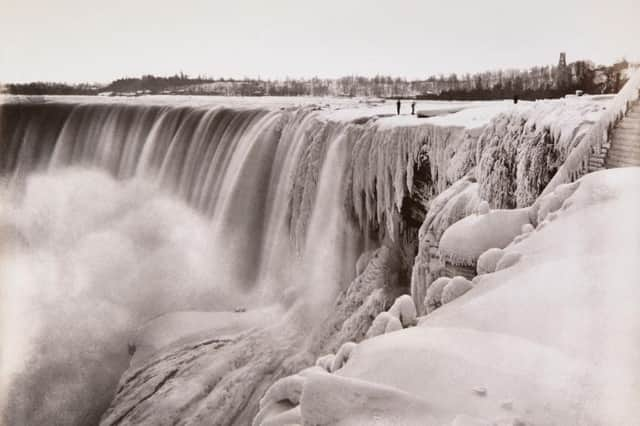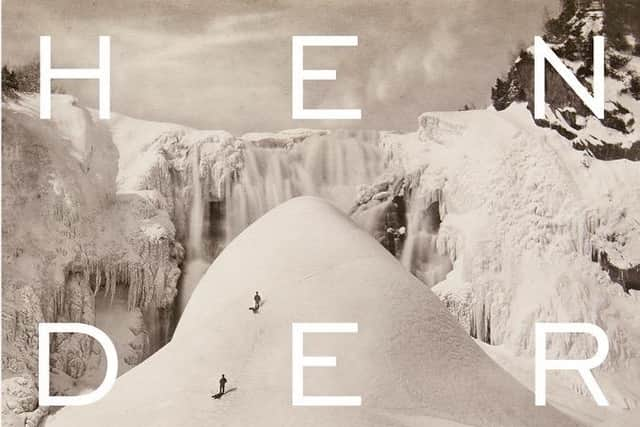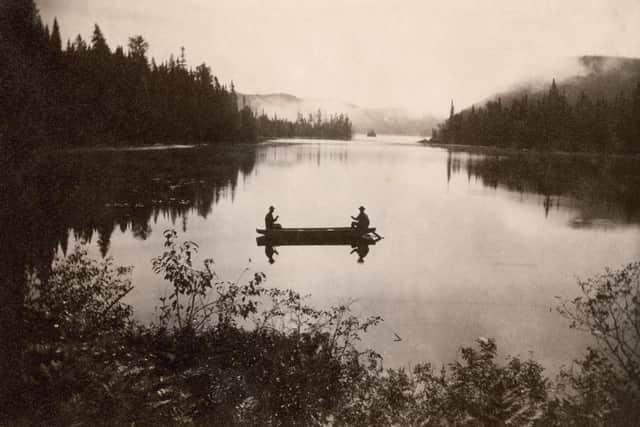Alexander Henderson: The best Scottish photographer you've (probably) never heard of


Earlier this month, a major exhibition opened at the McCord Museum in Montreal – an imposing four-storey building next to McGill University. The subject? The work of Scots-born landscape photographer Alexander Henderson, who was active in the latter half of the 19th century. To coincide with the show, which forms the centrepiece of the museum’s 100th anniversary celebrations, Yale University Press have produced an enormous monograph featuring 150 of his pictures, which will be published next week. In her foreword, Suzanne Sauvage, president and CEO of the McCord, describes Henderson as “an invaluable witness to the history of our land and our city [who] contributed toward the construction of a Canadian national identity.” Meanwhile, in an essay titled The Dawn of the Canadian Landscape: A Colonial Vision, the museum’s photography curator Hélène Samson writes that Henderson’s photographs “possessed a compelling aesthetic power that transcended illustration: they were capable of conveying the emotion inspired by nature.”
Given Henderson’s evident talent and his importance to the Canadian landscape tradition – which, in its turn, played a significant role in the development of a Canadian national identity – and given the fact that he grew up in south-east Scotland, and spent three years training to be an accountant in Edinburgh before emigrating to Canada in 1855, you’d think he might be a household name in his native land. Then again, perhaps his anonymity isn’t so surprising, because, while he was well-known during his lifetime, contributing to many of the leading periodicals of the day, by the time of his death Henderson’s work had – as Sauvage puts it – “fallen into oblivion.” When he died in 1913, not a single one of his obituaries mentioned his photographic activities. (The fact that, in the 1960s, his grandson took it upon himself to bin all of Henderson’s glass slides, which had hitherto been stored in the basement of the family home, didn’t exactly bode well for his legacy either.)
Advertisement
Hide AdFortunately, the McCord Museum retained a collection of almost 2,000 Henderson prints – the museum’s founder David Ross McCord had been a fan, and regularly commissioned Henderson to photograph landscapes. Furthermore, thanks to the endeavours of Stanley G Triggs, curator of the McCord from 1965 to 1993, who managed to secure the Henderson family archives for posterity, the museum now has a considerable archive of background material with which to contextualise his work. Triggs also wrote a biographical essay on Henderson, an edited version of which appears in the new monograph.


So, what do we know of this long-forgotten giant of 19th century photography? Well, he was born in Edinburgh in 1831, the son of Thomas Henderson, a nurseryman and seed merchant. His grandfather, Alexander Sr, the founder of the business, was the first chairman of the National Bank of Scotland and had been lord provost of Edinburgh. In addition to their home in Edinburgh, the family owned the 650-acre Press estate near Coldingham, where it seems Henderson may have spent much of his childhood. In 1849 he entered into an apprenticeship to become an accountant, but soon after his marriage to Agnes Elder Robertson in 1855 the couple emigrated to what was then Lower Canada, settling in Montreal.
There is no record of what – if anything – Henderson did by way of work during his first three years in Canada. Chances are: not a lot. As Triggs puts it in his essay: “both of the Hendersons received inheritances, which enabled them to enjoy the fashionable activities of the day”, and in Alexander’s case that mostly meant hunting and fishing. By 1857, however, he had taken up photography, initially as an amateur, but by 1867 he had set up his own portrait studio. By the time he moved to a new studio in 1874, he was referring to himself as a “landscape photographer,” and on the evidence of the new book, that was certainly where his talents lay.
His early images of Montreal will primarily be of interest to residents of the city, but even at this stage of his career he had an eye for a striking composition: his 1865 picture Spring Inundation Near Montreal, showing a rowing boat and a line of semi-submerged trees reflected in floodwater, conjures a wonderfully serene mood. And the further Henderson gets from the metropolis, the more interesting his work becomes. In his images of men dragging canoes over chaotic ice floes on the St Lawrence River there are pre-echoes of Frank Hurley’s photographs of the Shackleton expedition, taken half a century later. Another picture, titled Under Table Rock, Niagara Falls, in which he uses great walls of ice to frame distant building, anticipates the composition of Herbert Ponting’s iconic image of the ship Terra Nova, taken from inside an ice cave during Scott’s ill-fated expedition to the Pole.
Similarly, in terms of its alertness to the dynamic relationship between weather and landscape, his 1865 picture Snowstorm near Lake Beauport feels like a precursor to the iconic 1944 Ansel Adams image, Clearing Winter Storm, Yosemite National Park.


So, a transatlantic hat-tip to the McCord Museum and to Stanley G Triggs, for bringing the remarkable work of this gifted Scots-Canadian back into the light.
Alexander Henderson: Art and Nature, edited by Suzanne Sauvage and Hélène Samson, Yale University Press, £40. Order a copy at https://yalebooks.co.uk/page/detail/alexander-henderson/?k=9780300266924